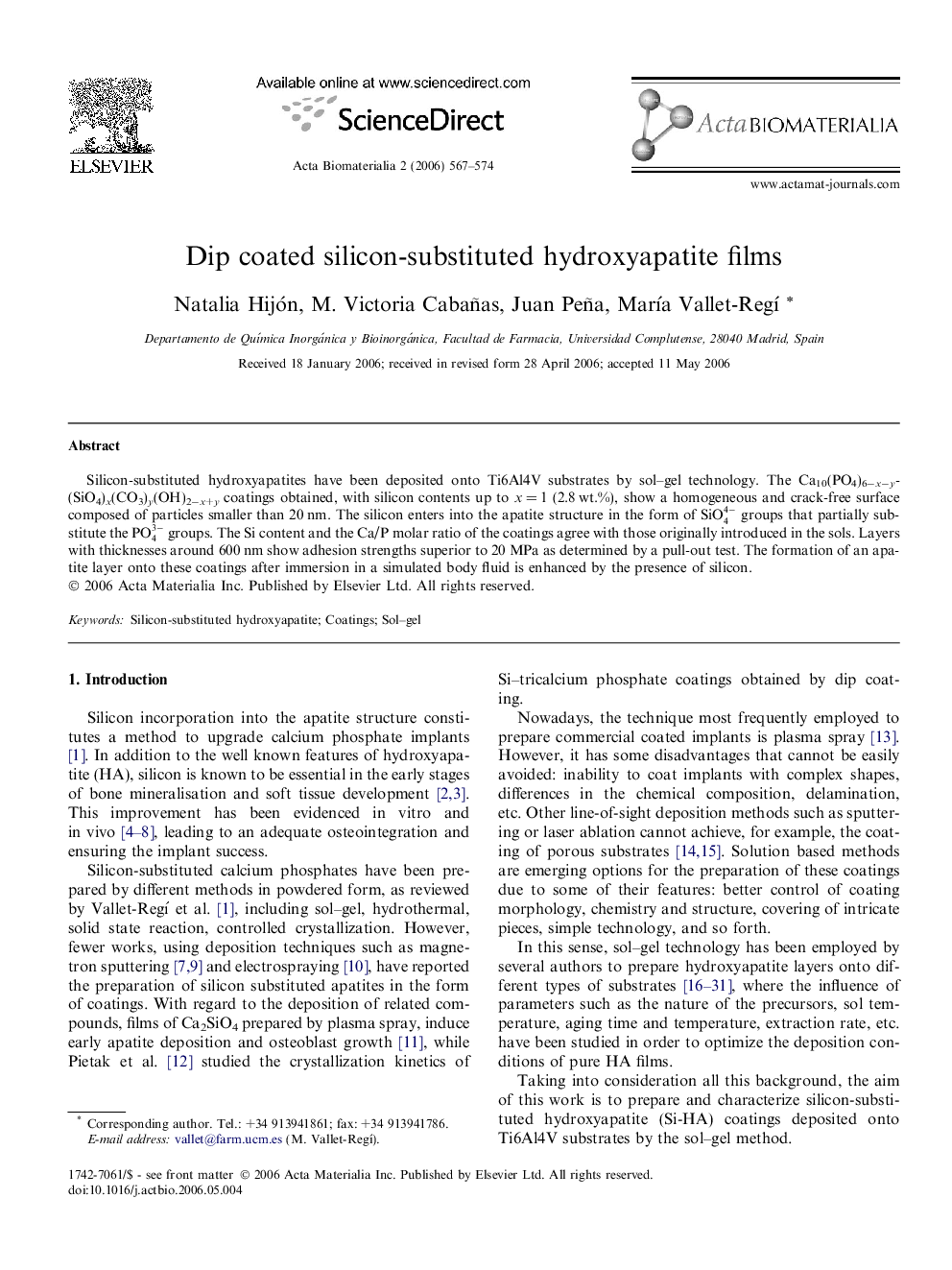| Article ID | Journal | Published Year | Pages | File Type |
|---|---|---|---|---|
| 2559 | Acta Biomaterialia | 2006 | 8 Pages |
Silicon-substituted hydroxyapatites have been deposited onto Ti6Al4V substrates by sol–gel technology. The Ca10(PO4)6−x−y(SiO4)x(CO3)y(OH)2−x+y coatings obtained, with silicon contents up to x = 1 (2.8 wt.%), show a homogeneous and crack-free surface composed of particles smaller than 20 nm. The silicon enters into the apatite structure in the form of SiO44- groups that partially substitute the PO43- groups. The Si content and the Ca/P molar ratio of the coatings agree with those originally introduced in the sols. Layers with thicknesses around 600 nm show adhesion strengths superior to 20 MPa as determined by a pull-out test. The formation of an apatite layer onto these coatings after immersion in a simulated body fluid is enhanced by the presence of silicon.
